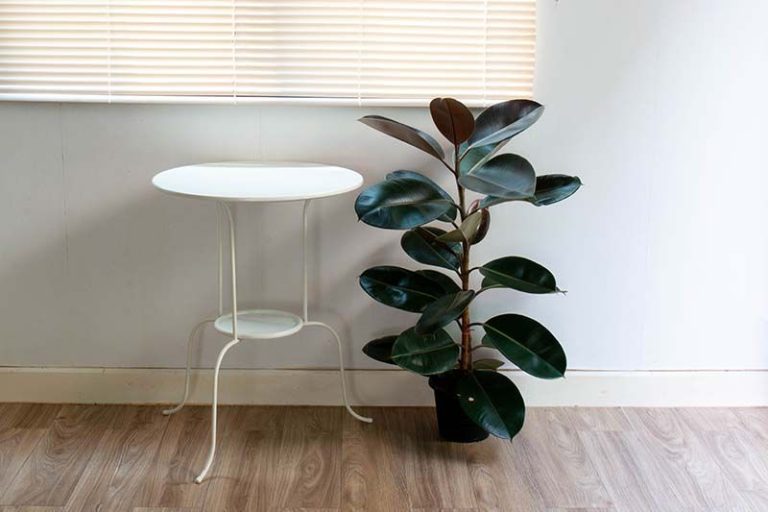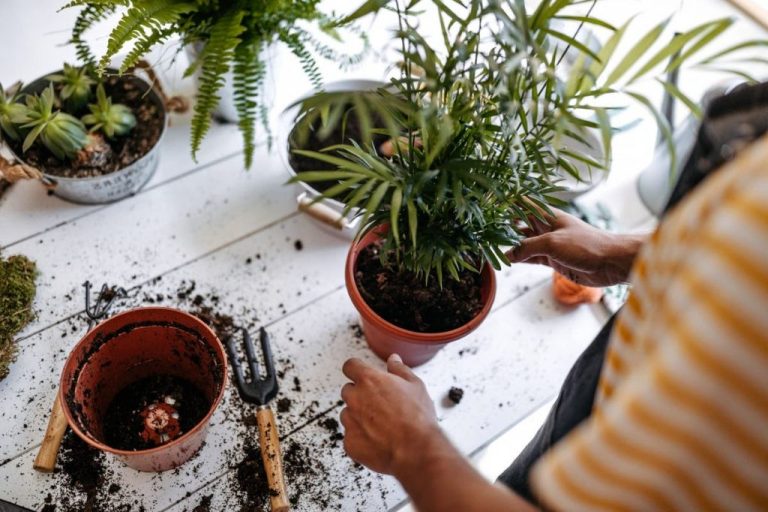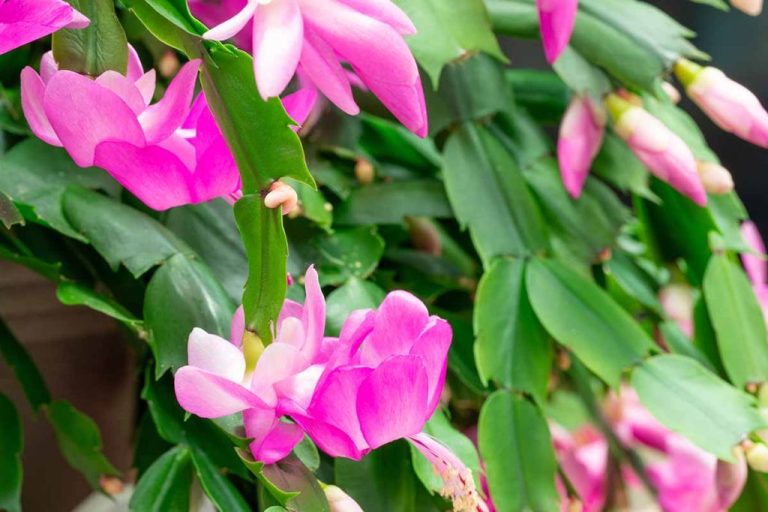Expert Tips For Caring For Jade Plants Indoors
Jade plants, or Crassula ovata, are succulent plants native to South Africa. They are appreciated for their ability to thrive indoors with minimal care and their lush, oval-shaped green leaves. Jade plants were brought to Europe in the 18th century and then became popular houseplants. Caring for jade plants indoors mainly involves providing the right amounts of light, water, warmth, humidity, soil mix, fertilizer, and pruning. By following some simple tips, it’s easy to keep a jade plant healthy and looking beautiful indoors.
Ideal Light Conditions
Jade plants thrive in bright, indirect light. The ideal location is a south or west facing window where they can get 4-5 hours of sunlight per day (source). Direct sunlight should be avoided as it can scorch the leaves. Filtered light through a sheer curtain is perfect. If the jade plant starts getting leggy with leaves spaced far apart, it’s a sign it needs more light.

Insufficient light will cause the jade plant to grow taller in search of sunlight. The leaves may also drop off if light levels get too low. Check for yellowing leaves or weak growth, which indicates it’s time to move the plant closer to a light source.
Rotating the jade plant weekly can help ensure even sun exposure. Just be sure to keep it turned in the same direction so it doesn’t get confused and start twisting or leaning.
Watering Best Practices
Jade plants require less frequent watering than many other houseplants. Allow the soil to dry out completely between waterings. Check the top inch or two of soil before watering and only water when it’s completely dry.
In the winter growing season, jade plants go dormant and require even less water. Only water every 2-3 weeks in the winter when the soil is bone dry. Watering too frequently in winter will lead to root rot.
Signs your jade plant needs water include drooping or wrinkling leaves that perk up after watering. If leaves are dropping, it’s likely being overwatered. Allow the soil to completely dry out for a period before resuming normal watering.
Conversely, signs of underwatering include leaves that are brown, yellow or deflated-looking. Water thoroughly until it drains from the drainage holes when this happens.
Humidity Preferences
Jade plants prefer an average indoor humidity level of 30-50% according to this expert source. Higher humidity in the 40-60% range can promote lush, healthy growth and prevent issues like leaf curling and tip burn according to plant care experts. However, jade plants can still thrive in average indoor humidity. To increase humidity around a jade plant, use a pebble tray filled with water, place a humidifier nearby, or mist the plant occasionally.
Ideal Temperatures
Jade plants thrive in temperatures between 65-75°F/18-24°C (source). They enjoy warm daytime temperatures with slightly cooler nights between 50-55°F. Avoid placing jade plants in cold drafts from windows, doors, or air conditioning vents as this can shock the plant.
During the winter months, make sure to move your jade plant away from drafty areas and ensure daytime temperatures do not go below 65°F. Jade plants can withstand nighttime temperatures as low as 32°F, but extended exposure to the cold can damage the plant (source). Maintaining the ideal temperature range will keep your jade plant happy and healthy indoors.
Soil Recommendations
Jade plants prefer a very well-draining soil. The best option is a cactus or succulent potting mix, which is formulated to drain quickly. According to The Best Soil for Jade Plants of 2023, Espoma African Violet Potting Mix is a good choice for its lightweight, porous texture that resists compaction.
You can also amend regular potting soil with perlite or coarse sand to improve drainage. Aim for a mix that is 50% potting soil and 50% perlite/sand. As noted in Jade Plant Soil & How To Choose The Best Potting Mix, too much peat or moisture-retentive ingredients can lead to root rot.
Whatever potting mix you use, make sure it drains rapidly and doesn’t hold onto moisture. This will prevent soggy soil, which jade plants abhor.
Fertilizer Needs
Jade plants typically have modest fertilizer requirements since they grow slowly. However, applying fertilizer occasionally during the active growing season can promote new growth and support flowering. According to HGTV, the best approach is using a diluted liquid fertilizer every 2-4 weeks during the spring and summer.
When applying fertilizer, be sure to use a balanced, water-soluble houseplant fertilizer at half the recommended strength. Fertilizing too much can burn the leaves. It’s also important to avoid getting any fertilizer on the leaves themselves, only applying it to the soil.
During the winter when growth slows, jade plants do not need fertilizer at all. It’s best to cease fertilizing in late fall through early spring. Resuming diluted liquid fertilizer in the summer will support new growth cycles.
Pruning Advice
Proper pruning is important for keeping jade plants healthy and shapely. It’s best to prune jade plants in spring or early summer after any blooming has finished. This avoids accidentally removing flower buds that have started to form for the next season.
When pruning, first remove any dead or dying leaves and stems by pinching or cutting them off at the base [1]. This helps encourage new growth and prevents disease. Next, prune to shape the plant by cutting stems back to an outward facing bud or pruning woody growth back to a side branch [2]. Pruning stimulates bushier and more compact growth.
Take care not to overprune, as jade plants can be sensitive. Prune judiciously just to remove dead growth and shape as needed. Jade plants rarely need radical pruning. Regular light pruning is better than occasional heavy pruning.
Repotting Guidance
The best time to repot a jade plant is every 2-3 years in the spring (March and April), when the plant is starting to exit dormancy, and there is new growth. Moving the plant to a slightly larger pot allows the roots room to spread and grow. When repotting a jade plant, carefully remove it from its current container and prune away any dead roots or any roots that are growing in circles around the perimeter of the root ball. This will help promote healthy new root growth (Source).
Make sure to use a well-draining potting mix meant for succulents or cacti. A soil blend that includes ingredients like perlite, pumice, or sand will provide the drainage jade plants need. Gently loosen the root ball and place into the new container, filling in around the roots with fresh potting mix. Be sure not to plant it deeper than it was originally growing. Water thoroughly after repotting to settle the roots and remove any air pockets.
Troubleshooting Common Issues
Jade plants can run into some problems when grown indoors. Here are some of the most common issues and how to resolve them:
Dropping Leaves
If your jade plant is dropping leaves, it’s likely due to overwatering. Jade plants are succulents that don’t need frequent watering. Allow the soil to completely dry out between waterings. Dropping leaves can also be caused by too little light. Make sure your plant is getting several hours of direct sunlight each day (Source).
Root Rot
Root rot is another common problem caused by overwatering. Check for mushy, brown roots and repot with fresh, dry soil if root rot occurs. Allow the soil to dry completely between waterings going forward (Source).
Pests
Common jade plant pests include mealybugs, aphids, and scale. These can often be removed by hand or sprayed off with water. For severe infestations, use an insecticidal soap. Isolate affected plants to prevent spreading (Source).





